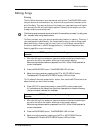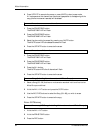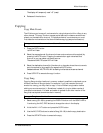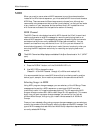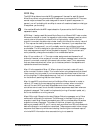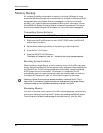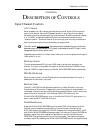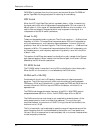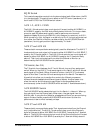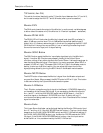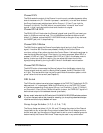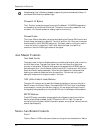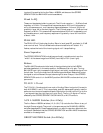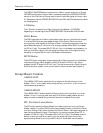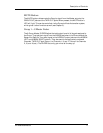
Description of Controls
70 X2 Reference Manual
FADERS will get signal from the Line inputs, and the short Monitor FADERS will
get the Tape Returns, the typical patch for recording & overdubbing.
HPF Switch
When the HPF (High Pass Filter) switch is pressed (down), a filter is inserted into
the signal path which rolls off (attenuates) frequencies below 75 Hz at a rate of 18
dB per octave. A 19 Hz signal will be attenuated 36 dB when this is turned on. It is
used to filter out subsonic frequencies which may be present in the signal. It is
independent of the EQ IN switch (see below).
Hi and Lo EQ
These provide standard shelving controls. The HI knob range is +/- 15 dB at a fixed
frequency of 12 kHz. This means that frequencies above 12 kHz will be boosted or
cut by the same amount , and frequency response between 1 kHz and 12 kHz will
gradually rise or fall to the shelving point. The LO knob range is +/- 15 dB at a fixed
frequency of 80 Hz. This means that frequencies below 80 Hz will be boosted or cut
by the same amount, and frequency response will gradually rise or fall from 80 Hz
to about 1 kHz.
This section of the EQ can be inserted into the Monitor path, instead of the Channel
path (see next section). When inserted into the Channel path, the Hi and Lo EQ are
affected by the EQ IN switch (see below).
TO MON Switch
The TO MON switch inserts the Hi and Lo EQ into the Monitor (short fader path).
When the EQ is in the monitor, it is not affected by the EQ IN switch.
Hi Mid and Lo Mid EQ
Combined with the Hi and Lo EQ section, these make up a 4-band parametric
equalizer. The Hi Mid controls and Lo Mid controls consist of three knobs each:
FREQuency, GAIN and Q (bandwidth). In both cases, the FREQ and GAIN are on a
concentric knob with GAIN on top and FREQ on the bottom, while the Q is a
separate knob.
The FREQ knob changes the center frequency of the EQ. Hi Mid FREQ range is
sweepable between 650 Hz to 15 kHz; Lo Mid FREQ range: 45 Hz to 950 Hz.
The GAIN controls how much boost or cut is applied to the band chosen. At the
center detent position, there is no effect (flat response). Turning to the right
amplifies the band, to a maximum of 15 dB. Turning to the left cuts the band, to a
maximum cut of -15 dB.
The Q, or bandwidth, can be adjusted to select the range of frequencies around the
center frequency that will be most affected by the boost or cut. It can be set to as
little as 1/6th of an octave when turned completely left, or to almost 2 octaves when
turned completely clockwise.




